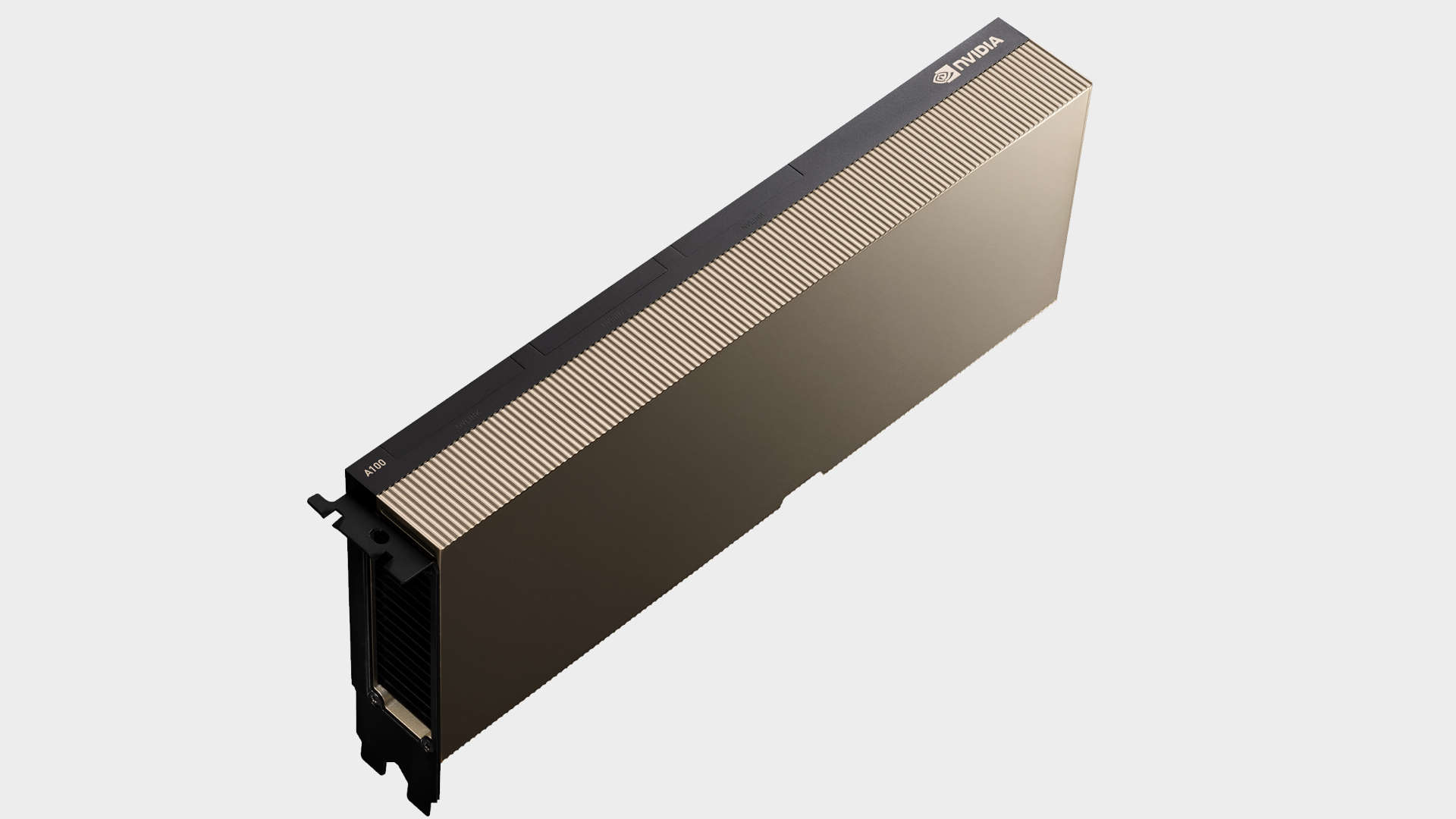Can't wait for Nvidia Ampere GPUs? You can buy one today for $12,500
The Nvidia A100 Ampere PCIe card is on sale right now in the UK, and isn't priced that differently from its Volta brethren.

Forget all the Nvidia Ampere gaming rumours, and ignore the Samsung 8nm speculation for a second, if you want to grab a GPU based on the next-gen graphics card architecture right now then you can have one. You just have to drop nearly $12,500 on it for the privilege. And, though it will absolutely slot into the PCIe 4.0 graphics slot on your AMD Ryzen motherboard, the chances of you getting shiny, ray traced gaming in Battlefield V or Control out of it are pretty damned slim/non-existent.
Still, if you want to get in on some next-gen compute from the big green GPU making machine, then the Nvidia A100 PCIe card is available now from Server Factory (via Overclocking.com) for the low, low price of £8,299. Excluding VAT.
At the moment the tax level is sat at 20% in the UK, so that does make it just shy of £10,000 all told. With the current conversion rate that equates to some $12,500, though that doesn't take into account any import duties. But if it's available in the UK there is probably some place in the US ready and waiting to take your money for an Nvidia Ampere compute card.
Now, admittedly, that is a lot of cash for the privilege of a card that isn't going to make with the in-game pretties—and, for the record, we're not for a second suggesting this is anything that any PC gamer should realistically consider—but the price difference between the Nvidia A100 PCIe and the Tesla V100 PCIe isn't actually that great. The Volta-based card from a few years back was priced around the same sort of level, and you're getting a whole lot more GPU for your money this time around.
There has been a lot of speculation recently about how much the new Nvidia Ampere GeForce cards might cost, especially as the green team bumped up the price scales pretty considerably with the Turing generation of consumer cards.
But if the professional GPUs aren't seeing prices pushed any further, despite having a whole lot more about them than their Volta brethren, then that potentially bodes well for the GeForce RTX 3000-series (if that is indeed their moniker) when they launch later this year.
The expectation is that competition will be far stiffer this year, with the red team potentially set to compete at the very highest level of graphics with the AMD Big Navi GPUs, also coming late this year. If that comes to pass then Nvidia may well need to make sure it's being realistic about the comparative pricing of GeForce Ampere cards against Radeon RX 6000 GPUs.
Keep up to date with the most important stories and the best deals, as picked by the PC Gamer team.

Best CPU for gaming: the top chips from Intel and AMD
Best graphics card: your perfect pixel-pusher awaits
Best SSD for gaming: get into the game ahead of the rest
And if Nvidia is using Samsung's 8nm (10nm-ish) production lithography for its entire consumer Ampere range—as has been rumoured by a single Twitter user and almost now taken as fact by the entire industry—then it shouldn't be seeing manufacturing costs rise significantly.
Samsung was reportedly touting its production facilities with huge discounts to try and gain ground on TSMC as the number one contract semiconductor manufacturer on the planet. That's the foundry producing the majority of AMD products at the moment, and it is rather well-subscribed right now with Apple also keen on a whole lot of its silicon, so Jen-Hsun could well have made a deal with the Korean giant.
For now, the next-gen gaming cards from Nvidia are just so much rumour until they actually appear. Though that could be in the next few months, so we may not have long to wait to discover the reality.

Dave has been gaming since the days of Zaxxon and Lady Bug on the Colecovision, and code books for the Commodore Vic 20 (Death Race 2000!). He built his first gaming PC at the tender age of 16, and finally finished bug-fixing the Cyrix-based system around a year later. When he dropped it out of the window. He first started writing for Official PlayStation Magazine and Xbox World many decades ago, then moved onto PC Format full-time, then PC Gamer, TechRadar, and T3 among others. Now he's back, writing about the nightmarish graphics card market, CPUs with more cores than sense, gaming laptops hotter than the sun, and SSDs more capacious than a Cybertruck.

